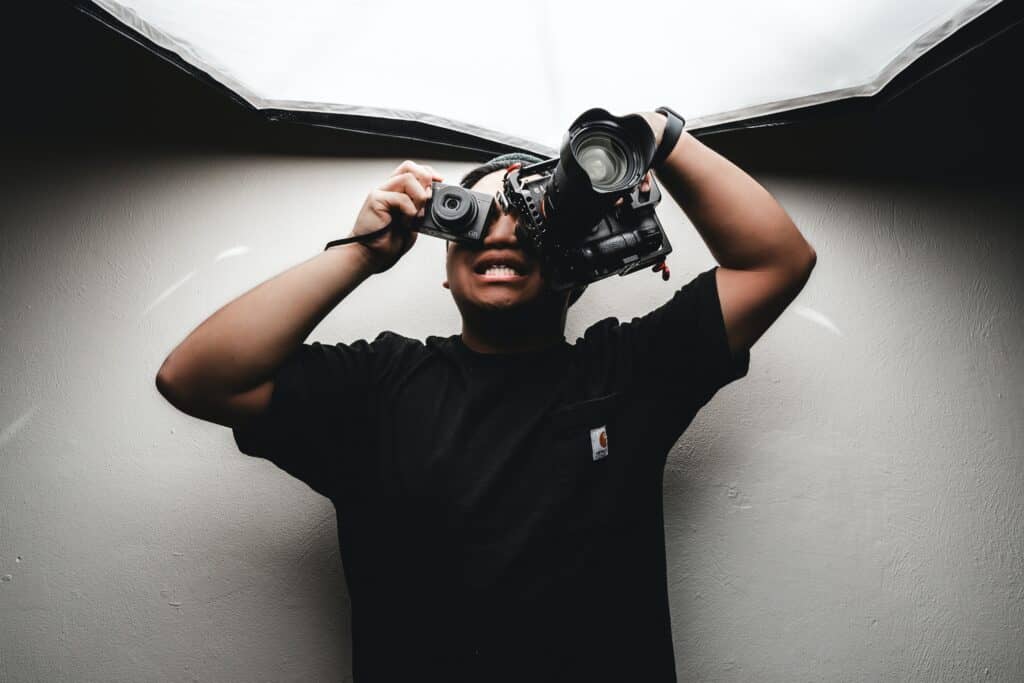If you’ve ever done a quick Google search to buy a camera, you may have seen those cameras come in different types. As such, deciding which type of camera is best for you has become a bit more complicated with all of these new options.
Luckily, most only need to decide between a point-and-shoot, DSLR, and mirrorless option. All three work well for capturing photographs but have their upsides and downsides.
DSLR
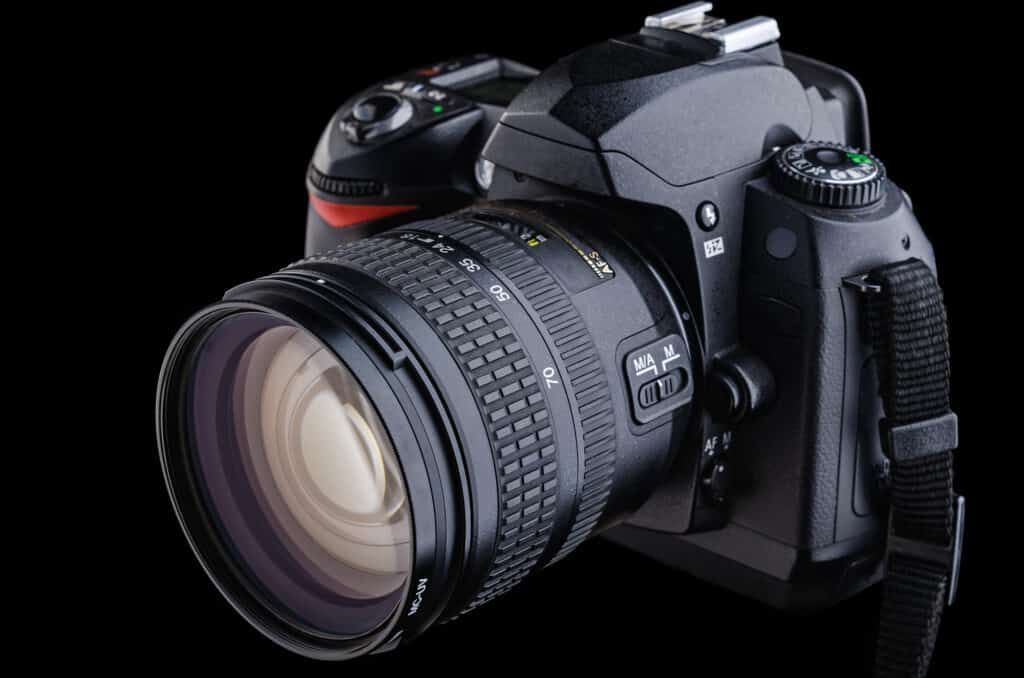
A DSLR usually comes to mind when someone considers a camera professional. These cameras command attention with their bulk, size, and coveted features.
DSLR is short for Digital Single-Lens Reflex camera. This is because the way that DSLR works is as such: the camera has a mirror on the inside of it that reflects the light coming from the lens. The reflection is what you see in the viewfinder. That’s where the term ‘reflex’ comes from. When the shutter is pressed, that mirror flips up out of the way, and the shutter slides open. Light coming from the lens takes a straight shot to the imaging sensor, where a photograph is made.
DSLRs have professional image quality because the cameras sport powerful sensors and very high megapixel counts. The interchangeable lenses are a huge advantage because the ability to change lenses allows you unlimited possibilities. DSLRs are also better at shooting in dim locations, such as clubs or evening gatherings. DSLRs also have the longest battery life of all cameras, weather sealing, and a durable build.
However, DSLRs are significantly more expensive than point-and-shoots. Their other downsides include being very loud when taking a picture, bulky and heavy, and requiring ongoing maintenance and care (akin to a car oil change or tuneup). DSLRs don’t tend to be ready to use right out of the box, and you’ll need to get used to their modes and settings before taking a great photograph.
Pros
- Professional image quality
- Ability to change lenses
- Large sensors for the great low-light ability
- Lots of megapixels for better prints and editing ability
- Optical viewfinder, as well as a large LCD screen
- Full manual controls
- Long battery life
- Weather-sealed and durably built
- It holds its value for a long time so that you can resell it for close to the purchase price
Cons
- Expensive
- Heavy and bulky in size, this is not a compact camera
- Requires purchase and carrying lenses and accessories
- Loud focus and loud shutter sound
- A steep learning curve that requires patience and time
- Requires yearly maintenance and care
Mirrorless
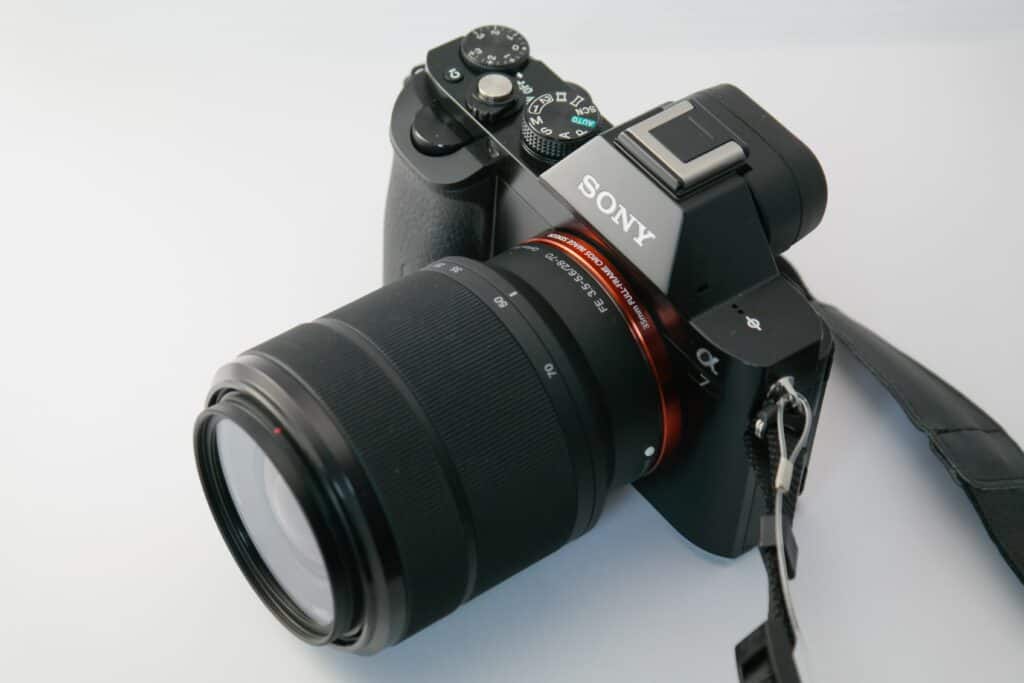
Why is mirrorless called such? Because they don’t use a mirror! You see, a digital camera works because an actual mirror on the inside of the camera reflects an image into the viewfinder. You see this when you look through the viewfinder on your camera. In a mirrorless camera, this feature is replaced by a computer known as the imaging sensor. This sensor gives you a digital preview on the LCD or electronic viewfinder. This is also why you can see real-time exposure changes in a mirrorless camera instead of a DSLR.
A mirrorless camera’s significant benefit has a DSLR’s power and functionality in a small, compact package. These cameras are small enough to fit into a purse or bag and light enough to take on an adventure. Mirrorless cameras have removable lenses, connectors for off-camera flashes and other light sources, and manual modes.
All of this does come at a cost. Mirrorless cameras can be quite pricey. They also require additional accessories and equipment, such as lenses, filters, and cases. Mirrorless cameras have automatic modes but do much better in manual modes, requiring you to adjust the ISO, shutter speed, and aperture manually. The battery life of a mirrorless camera is not very good due to the LCD screen being on at all times. Good thing that you can turn off the LCD screen and use the view-finder only.
Pros
- Professional image quality
- Small and compact
- Ability to change lenses and the lenses are also compact
- Large sensors for great low-light ability
- Lots of megapixels for better prints and editing ability
- Extremely fast focusing ability
- Smartphone connectivity
- Full manual controls
- Silent focus and silent shutter
- No mirrors or moving components, so repairs are less expensive
- It holds its value for a long time so that you can resell it for close to the purchase price
Cons
- Very expensive
- Terribly battery life due to the electronic screens, so you need multiple batteries
- No real viewfinder, just an electronic display
- Requires purchase and carrying lenses and accessories
- A steep learning curve that requires patience and time
- Not well weather sealed, so don’t get it wet
- Not as durable as other camera types
Point and Shoot
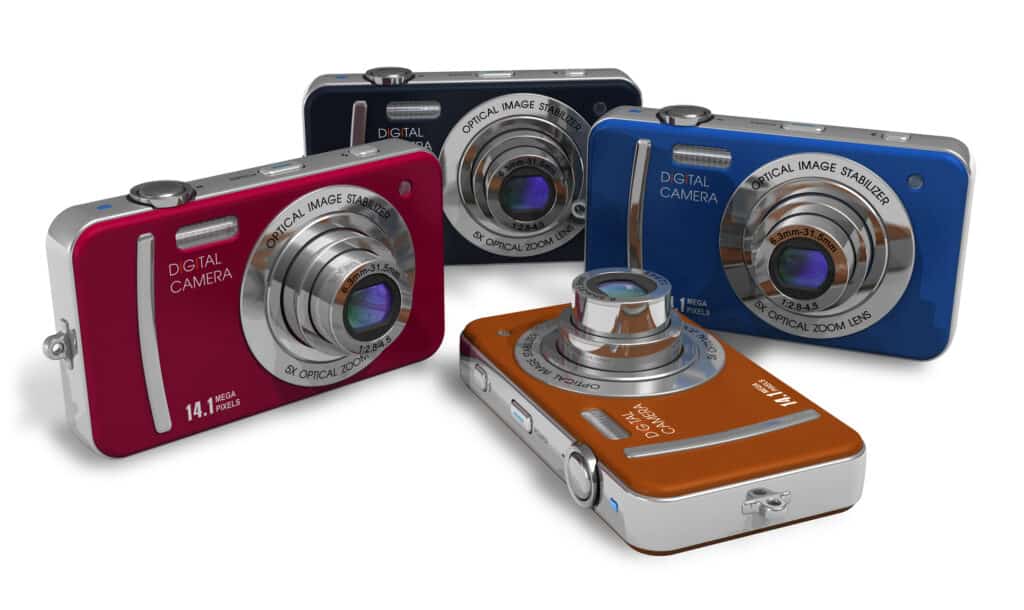
This is the most popular type of camera among families and casual users. As the name suggests, point-and-shoot cameras are the easiest to operate because you literally ‘point and shoot’! That’s because everything about these cameras is automated or built-in. Point-and-shoots have a built-in lens, autofocus, and a flash component.
The menu tends to be very simple and user-friendly, easy to maneuver without an instruction manual. This is also its downside, as these cameras do not have much manual control, and photographers cannot dictate much about the final image.
These cameras are pocket-sized, ergonomic, and more economical than DSLRs and mirrorless cameras.
The camera is also ready to use directly out of the box without additional accessories or lenses (With all of the key components being fixed, there is no need to carry around additional products). Point and shoots tend to be very quiet or silent cameras, excellent to use in situations where silence is key.
However, because these cameras are not intended for professionals and don’t sport powerful sensors, the megapixel count is low, which leads to lower or limited quality. Point-and-shoot cameras have smaller sensor sizes, so does not work very well in low light.
Pros
- Good quality images in good lighting
- Everything is already built-in, so no accessories are needed
- Ready to work right out of the box with no real learning curve
- Very compact and very lightweight, easy to travel with
- Full automatic
- Quiet and discreet
- Inexpensive and very bang-for-your-buck
Cons
- Terrible image quality in low lighting
- Limited control and flexibility due to little to no manual settings and a built-in lens
- Short battery life due to the LCD screen
Which One is Right for You?
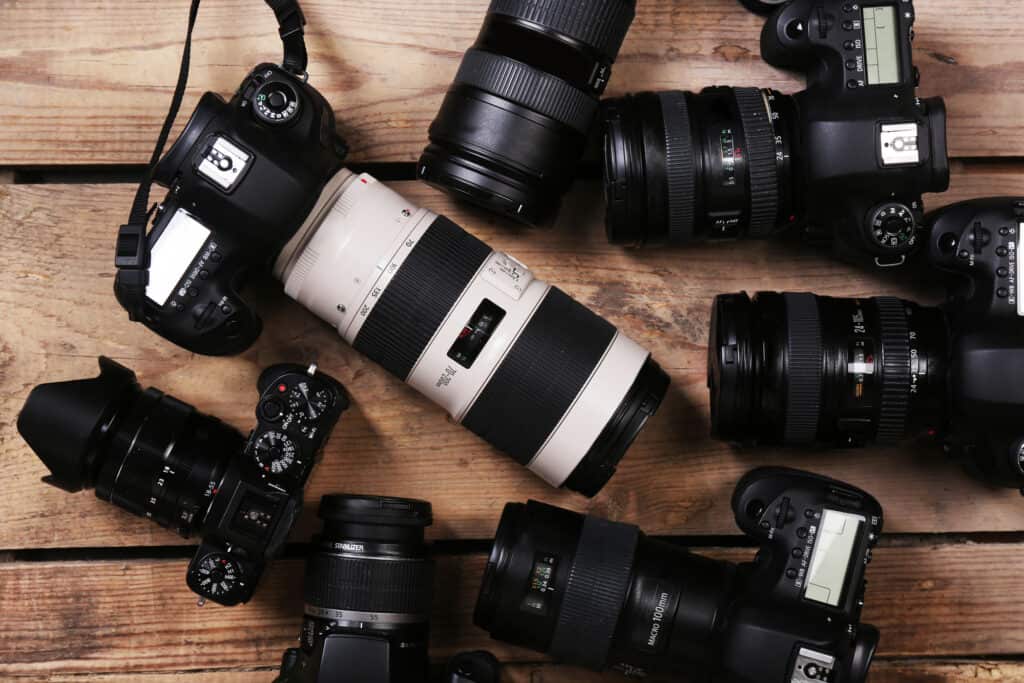
The type of camera you use is important because the camera type will either aid you in producing the images you want or hinder you. As such, it’s a good idea to ask yourself the following questions and see what type of camera fits your needs:
- Why am I buying a camera? Is it to get into photography or just document vacations and precious moments?
- Does the size of the camera matter?
- Will the photographs be printed?
- What is my budget?
By answering those questions, you can better decide the right model to invest in. Consider the pros and cons of each camera type written above and compare them to your answers!
For example, a DSLR may be too complex for the average person, and a Point and Shoot can be a better idea. But what if you want DSLR quality in a small size? Mirrorless may be better for you! These are all things to think about.
